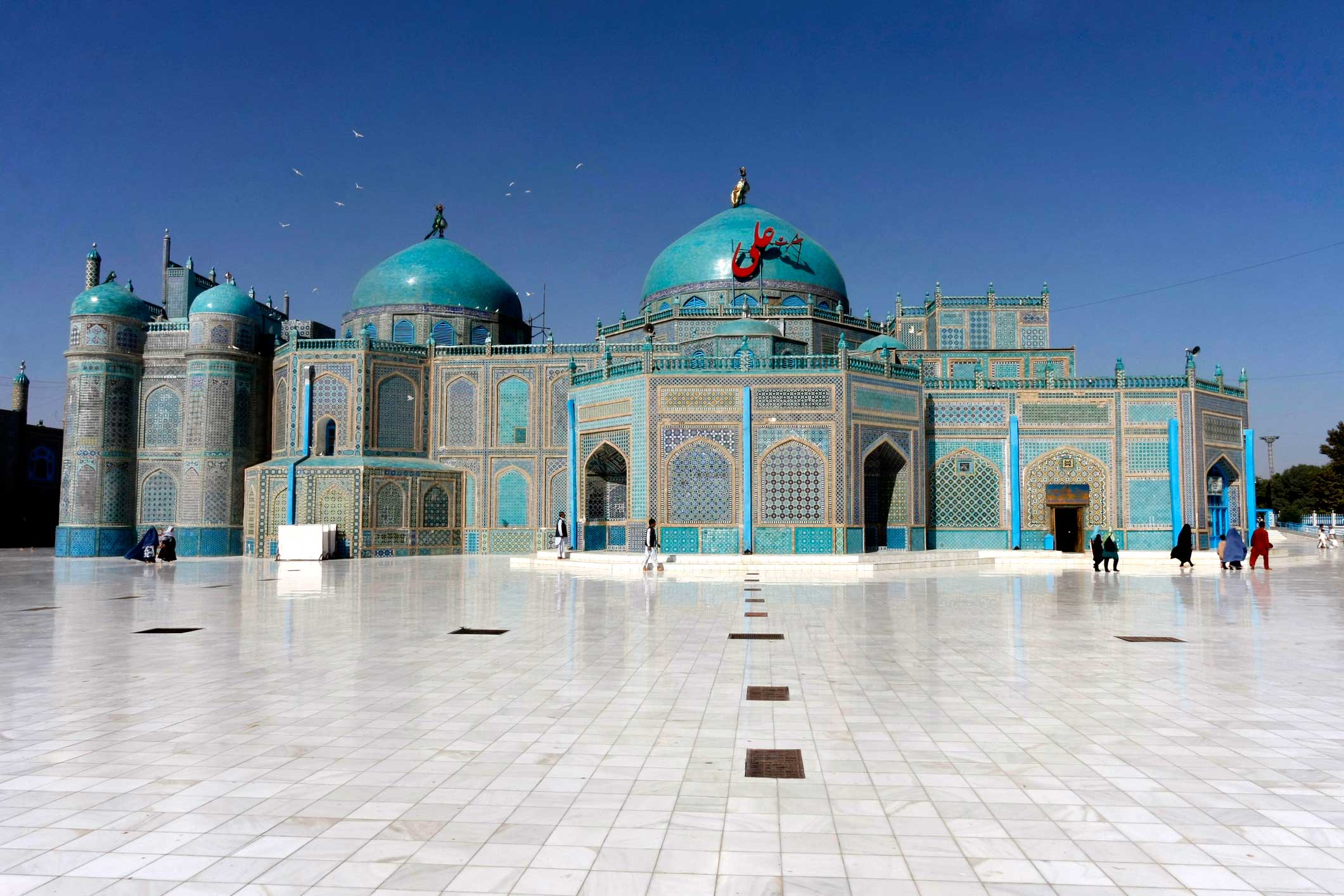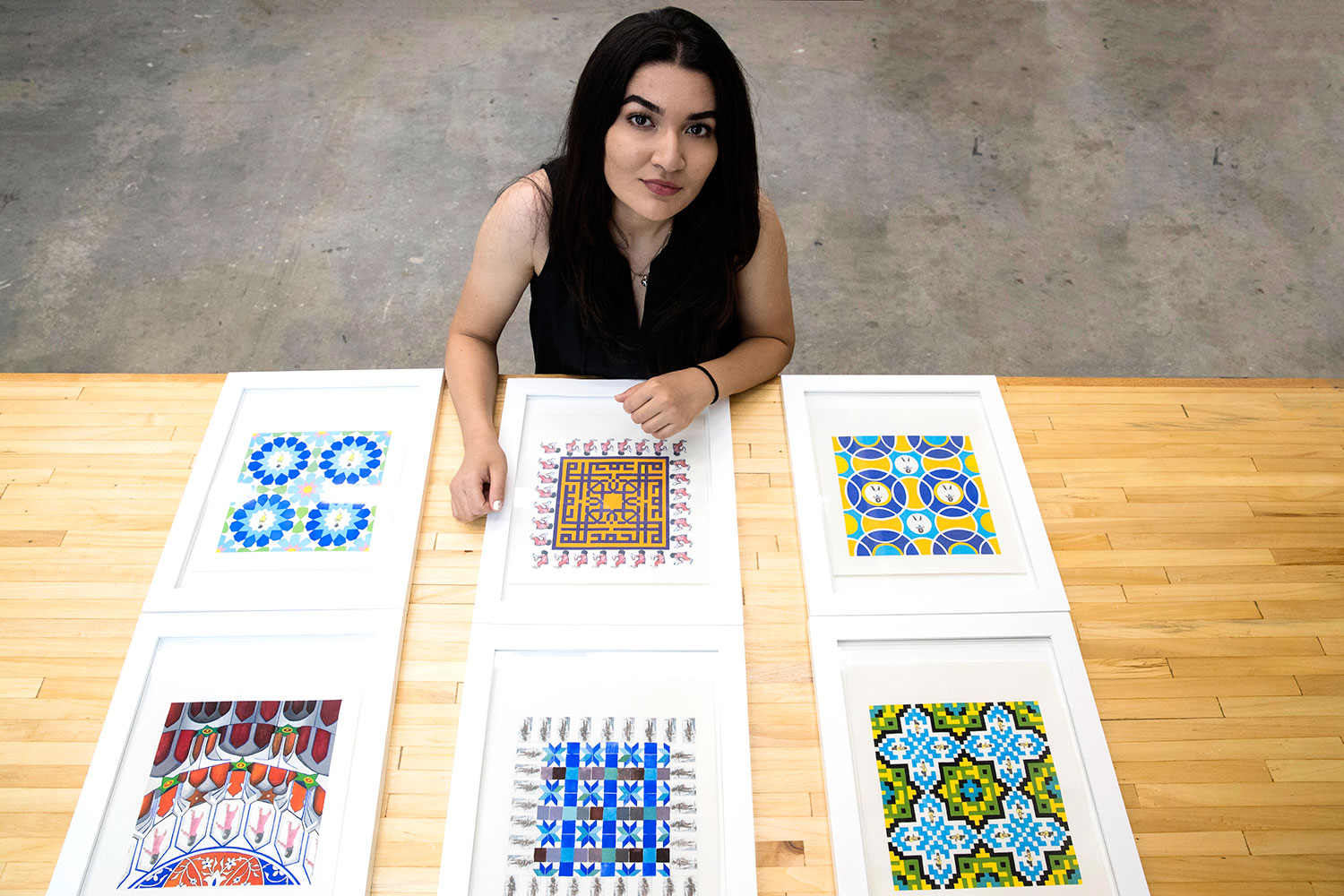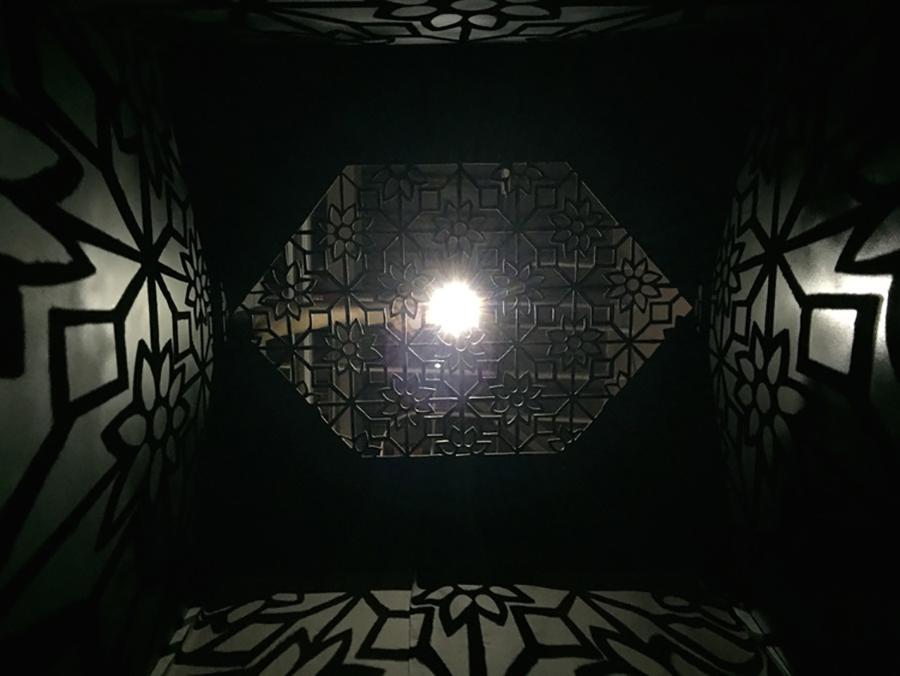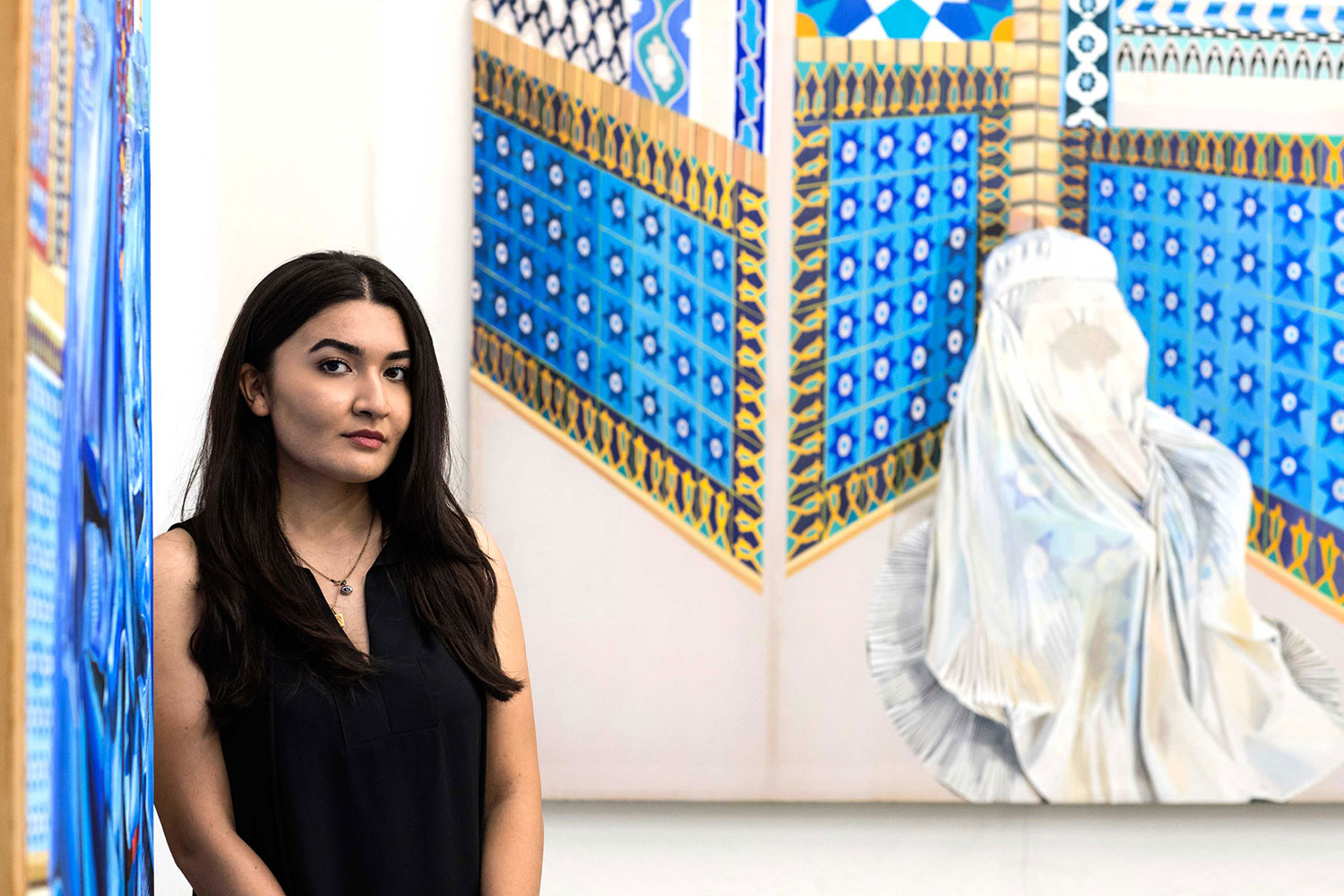University of Virginia graduate art student Zuhal Feraidon, who was born in Mazar-i-Sharif, Afghanistan, is using her art to change perceptions of Afghan women at home and abroad.
“What I am trying to achieve is empathy,” said Feraidon, who is an Aunspaugh Fifth-Year Fellow in UVA’s McIntire Department of Art. “I want people to connect with my subjects. Art allows you to feel, and that is something that I want to access.”
This mission recently earned Feraidon a rather unusual accolade; the University of Edinburgh’s Institute for Advanced Studies in the Humanities named her a “Dangerous Woman.” The institute’s Dangerous Women project invites female artists, poets, writers and activists to write essays reflecting on what it means to be a “dangerous woman,” speaking out against injustice or oppression.
In her essay, Feraidon wrote about her 2015 return to Mazar-i-Sharif, where she reconnected with her mother’s family and completed an independent study. It was just the second time she had been back to Afghanistan since her family left 19 years ago, moving first to Turkmenistan and, nine years later, to the United States. She found a country living with an ever-present fear of violence.
“When I landed at the airport, I missed an explosion by only three hours,” she said. “When you are there, you are in a state of constant fear and alertness that something might happen.”
For women, Feraidon said, that fear is intensified both by worry for their children and by a lack of control.
“Being a woman under the circumstance of war is difficult, because not only are you expected to care for others around you, but you are also not given a position of leadership,” she said. “Many women there are leaders, but they are not given that title.”
While in Mazar-i-Sharif, Feraidon met female artists who worried about practicing their art publicly. One woman, a graffiti artist who hopes to use her talent to beautify torn-down walls, came up with the creative solution of transposing her planned graffiti onto digital images of walls.
“It seems like an amazing concept, but she cannot carry it through” to actual physical walls, Feraidon said. “Instead, she does it digitally.”
Feraidon, knowing that she did have the freedom to share her art publicly in the U.S. and around the globe, was determined that it would reflect her heritage and shed light on the challenges that women face in modern Afghanistan.
“Art allows me to express myself as an Afghan woman, which a lot of Afghan women do not get to do because of the realities of life there and of being surrounded by war,” she said.
Feraidon became interested in art when she took a drawing class as a first-year student at UVA, intending only to fulfill a humanities requirement. She quickly found herself spending more and more time in UVA’s art studios, getting to know professors there and, eventually, discovering a passion that she never knew she had.
“When I came here, I did not intend to be a studio art major, but I think at the University, there are always places where you can find your passion and practice it,” she said.
Primarily a painter, Feraidon has created several works featuring motifs from her hometown’s most prominent building, The Blue Mosque.
“Whenever you go into the mosque, you see the white peace doves that live there,” Feraidon said. “I think the women there kind of look like the doves, because the burqas they wear are white and you cannot really tell who is underneath.”

Feraidon draws inspiration from The Blue Mosque, a prominent mosque in her hometown in Afghanistan.
One of Feraidon’s paintings depicts an anonymous woman, enrobed in a white burqa, sitting beside azure blue tiles that recall the mosque’s luminous, intricate tiling. Her “Hide and Seek” series incorporates photographs that she took of Afghan women and girls going about their daily lives, shown among painted patterns that resemble those in mosques throughout Afghanistan’s Balkh province.
In her essay for the Dangerous Women project, Feraidon wrote that integrating her photographs of Afghan girls into the patterns of traditional Islamic art “illustrates that these women are created by God and therefore are holy in their natural appearance and being.”

Feraidon with the paintings in her “Hide and Seek” series. She used photos of Afghan women to create some of the patterns seen here, including the borders of the two paintings in the middle row and the central figures of paintings in the first and third rows. (Photo by Dan Addison, University Communications)
While in Mazar-i-Sharif, she spoke with many women who dislike wearing the burqa, but feel obligated to because of the political climate.
“In the 1990s, you would be killed for not wearing a burqa. Now, you don’t quite know what is going to happen if you are not wearing a burqa and go into certain areas,” she said.

Feraidon’s installation features a steel enclosure with cutout patterns that reference traditional Islamic art. The shape of the cutout also mimics small openings in traditional burqas, from which women get their only glimpse of the outside world.
“If art is successful, it touches the viewer on an emotional level,” she said. “It is something that is available to be viewed by anyone who is willing to look, and I think that it has power to promote social change.”
Media Contact
Article Information
October 4, 2016
/content/dangerous-woman-uva-artist-calls-attention-plight-afghan-women

